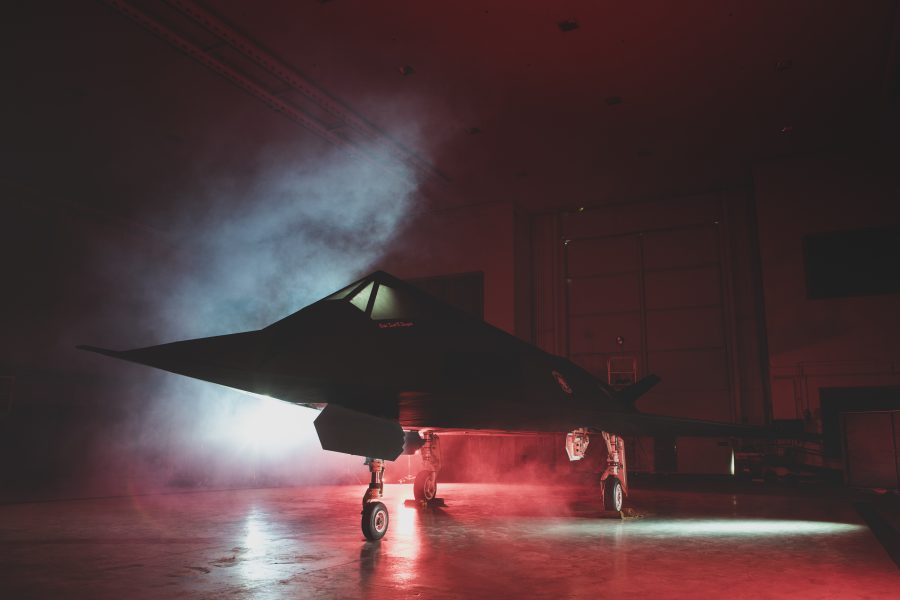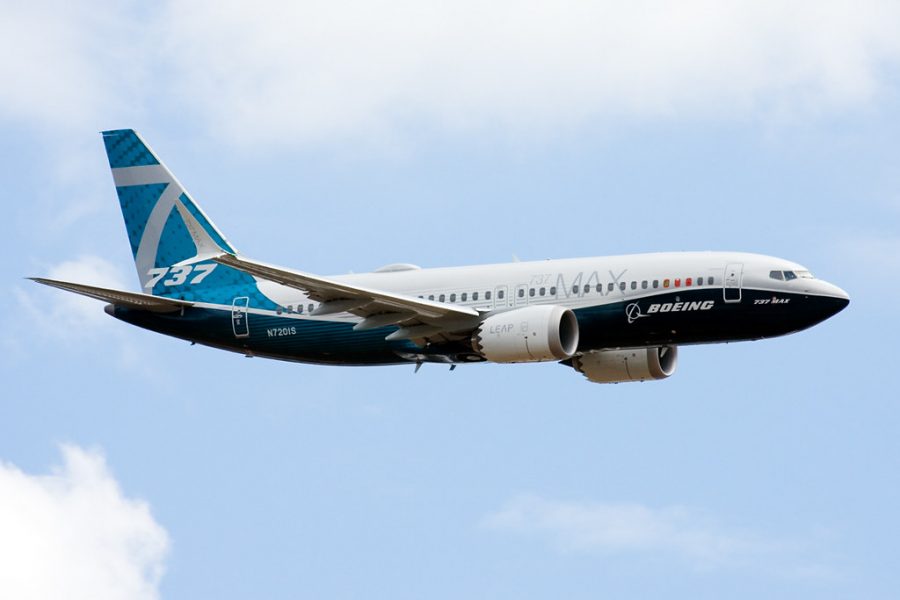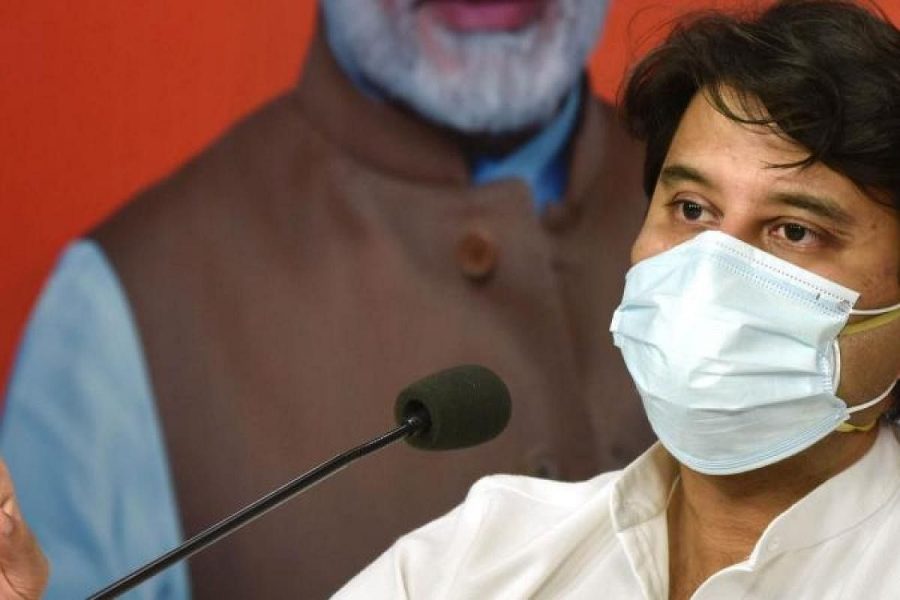China said Boeing's 737 MAX planes were airworthy after taking "corrective actions" to improve their safety, according to an aviation authority directive on Thursday, December 2, following the aeroplanes being grounded in 2019 after two fatal accidents.
Beijing was the first among a slew of countries to ground Boeing planes after an Ethiopian Airlines crash in March 2019 killed all 157 passengers and crew on board, only five months after another Boeing jet went down in Indonesia, killing all 189 people on board.
But a Civil Aviation Administration of China (CAAC) document concluded that "after conducting the sufficient assessment, CAAC considers the corrective actions are adequate to address this unsafe condition."
(Image Courtesy - Reuters)
In the airworthiness directive, the CAAC said Boeing had addressed the design and the "unsafe conditions" of the planes. The aviation authority offered instructions to airlines on revisions needed -- mainly to safety protocols -- before the aircraft returns to service.
Chinese pilots will need to complete new training before commercial flights can begin, the Civil Aviation Administration of China said on its website. It said Boeing Co. is required to install additional software and components.
The directive means there are now no regulatory obstacles for the return of Boeing 737 MAX in China, although it was not clear when flights will immediately resume.
Air China Boeing 737 Max (Image Courtesy - Flight Global)
"CAAC's decision is an important milestone toward safely returning the 737 MAX to service in China," Boeing in China said in a statement to AFP.
"Boeing continues to work with regulators and our customers to return the airplane to service worldwide," it said.
China is the last key travel market to bring the planes back into use after the United States and Europe allowed the model to return to the skies in 2020.
At the time of the grounding, a dozen Chinese carriers had the planes in their fleets -- about a quarter of all such jets in operation worldwide, according to data from the State-owned Assets Supervision and Administration Commission that oversees big state-run carriers.
Boeing, headquartered in Chicago, was required to redesign the system during a process overseen by an unusually broad array of regulators from the United States, Europe China and the Middle East.
China has the largest 737 Max fleet after the United States, with 97 aircraft operated by 13 carriers before the suspension, according to state media.
China is especially important to Boeing and its European rival, Airbus Industrie because they are counting on its expanding travel market to propel sales growth. North American and European demands are forecast to be flat in the coming decades.
More than 180 countries have now lifted bans on the Max but Indonesia, where the first of the two crashes took place, and Russia has still not signed off.
India’s air safety regulator DGCA allowed Boeing 737 Max to fly again in August this year ending its nearly two-and-a-half-years of regulatory grounding in a key travel market for Boeing.
Rakesh Jhunjhunwala-backed new airline Akasa Air has ordered 72 ‘737 Max’ aircraft from US-based aerospace company Boeing to launch service in India.
SpiceJet has also commenced its operations on Boeing 737 Max aircraft by flying India's Civil Aviation Minister, Jyotiraditya Scindia to win back confidence and to instil the faith of travellers on the aircraft that had a ban on it lifted recently.
Read next
Omicron could result in the resumption of extensive travel restrictions - IATA
Radhika Bansal
03 Dec 2021
The sudden emergence of Covid-19's Omicron variant may force countries to re-impose extensive travel restrictions, said International Air Transport Association.
According to IATA, the sudden imposition of strict new travel requirements as a result of Omicron has significantly increased uncertainty.
"Meaning any strong rise in global RPKs is unlikely in the next 2-3 months," it said in its Air Passenger Market Analysis for October 2021. Air passenger volume is measured in revenue passenger kilometres or RPKs.
As per the IATA, it is too early to know the impact the variant will have on new cases, and it is not yet adequately captured in bookings data.
"First of all, new Covid-19 infections are again increasing globally as of late November, driven by a strong outbreak in Europe and the start of a new wave in North America. New cases were falling in most other regions, however, and indeed, travel restrictions were eased in many regions, including in Asia-Pacific countries which had been strict so far, and on the crucial North Atlantic market. That being said, the emergence of the Omicron variant in late November may result in countries re-imposing more extensive travel restrictions.But it strongly increases uncertainty and the possibility that the air travel recovery reverses for a period starting late November. Bookings made for travel in November show the upward trend in international RPKs is likely to continue during that month. However, this is unlikely to extend to December. In addition, domestic RPKs may once more deteriorate in November, in parts due to outbreaks and new restrictions in Russia and China."International Air Transport Association (IATA)
The Omicron variant is a variant of SARS-CoV-2, the virus that causes COVID-19. It was first reported to the World Health Organization (WHO) from South Africa on 24 November 2021. On 26 November 2021, the WHO designated it as a variant of concern and named it after omicron, the fifteenth letter in the Greek alphabet.
The variant has an unusually large number of mutations, several of which are novel, and several of which affect the spike protein targeted by most vaccines at the time of discovering Omicron. This level of variation has led to concerns regarding transmissibility, immune system evasion, and vaccine resistance. As a result, the variant was quickly designated as being "of concern", and travel restrictions were introduced by several countries on African nations in an attempt to slow its international spread.
(With Inputs from IANS)
Read next
Facial Recognition Technology (FRT) has not yet been introduced at any of the airports in India, Minister of State in the Ministry of Civil Aviation General VK Singh (retd) said in Lok Sabha on December 2.
The question was asked by MPs Feroze Varun Gandhi and Ram Shankar Katheria.
Mr Singh said FRT has not yet been introduced at any of the airports in India. However, the Airports Authority of India (AAI) is working on a project of FRT-based Biometric Boarding System as part of the first phase of Digi Yatra Implementation at four airports - Varanasi, Pune, Kolkata, and Vijayawada.
He added that the proposed Digi Yatra Central Eco-system is planned to go live in March 2022. It is to be scaled up in a phased manner for adoption across various airports of the country.
On the safeguards taken by the government to prevent the leakage of passenger data, he said that as per the Digi Yatra policy, registering for the Digi Yatra Central Ecosystem is optional for passengers. For availing of the Digi Yatra services, passengers will need to send the travel details (Pax details, PNR and Facial Biometrics) through an app to the Biometric Boarding System of the respective departing airport.
If for a particular journey, the passenger does not want to avail the Digi Yatra services then they have an option to not send the data and use the existing manual process at airports, he informed.
"The Digi Yatra Central Ecosystem envisages assessments (by independent teams to assess the level of security and system resilience to protect PII) and periodic audits by governing or regulatory bodies twice every year. Facial recognition is as per Industry ISO standards with best in class National Institute of Standards and Technology (NIST) listed algorithms complying to Data Privacy and Data protection requirement as laid down by the government.Data shared by the passengers will be used for the purpose defined and would not be shared with any other external stakeholders, the minister said. Data shared by passengers will be retained during their transit at the airport and will not be retained for more than 24 hours after the departure of the flight."General V.K. Singh (retd), Minister of State, Ministry of Civil Aviation
Facial recognition is a type of image identification technology. These technologies rely on many of the processes and techniques associated with artificial intelligence (AI). In particular, applications tend to use machine learning to classify subjects at speed and scale.
This technology is widely in use to unlock smartphones, tablets and other such devices. It is also used by some countries to verify someone’s identity at border control. Provided the core human rights protections are followed, one-to-one facial identification has a relatively low-risk profile with its current usage.
Read next
The world's first-ever operational stealth fighter makes a dramatic comeback
Prashant-prabhakar
03 Dec 2021

The F-117A Nighthawk, also dubbed as the Frisbee and the Wobblin’ Goblin, was the world’s first operational stealth aircraft. Developed by Lockheed Martin after extensive studies on stealth technology, the bird took off for the first time from Area 51 almost 50 years back.
F-117 restoration | lmaeronauticspalmdale.smugmug.com
The first ten of the 55 F-117 aircraft were retired in 2006 while a formal retirement ceremony took place at Wright-Patterson AFB in March 2008.
Retired aircrafts making a comeback are a rare occurrence. When it does though, it's a huge deal. Reportedly, the supposedly "retired" aircraft was spotted over Area 51 just a few months earlier this year.
Much to the surprise of all, the USAF finally declared the "resurgence" of the retired F-117, which was until then, kept under wraps.
What was the purpose behind bringing this fighter out of retirement?
Owing to their stealth technology, it is believed that the USAF is now using the F-117 as a developmental and “red air” training platform, to train their fighter pilots against the adversary stealth fighters, the Russian Su-57 and the Chinese J-20.
Reportedly, the pilots would have a better chance of intercepting future stealth aircraft if they train with the F117 Nighthawks.
Tech and specifications
The outer surface of the aircraft is coated with a radar-absorbent material (RAM) which would deflect hostile radar into narrow beam signals.
Powered by two low-bypass F404-GE-F1D2 turbofan engines from General Electric, the wide and flat structure of the engine exhaust area reduces the infrared and radar detectability of the aft section of the engine.
General Electric F404 | Wikipedia
The cockpit features a Kaiser Electronics head-up display (HUD) and has a full-colour moving map developed by the Harris Corporation.
Additionally, the flight deck is equipped with a large video monitor, which displays the infrared imagery from the aircraft’s onboard sensors.
F-117 flight deck | Pinterest
The F117 can carry a range of tactical weapons that include BLU-109B low-level laser-guided bomb, GBU-10 and GBU-27 laser-guided bomb units, Raytheon AGM-65 Maverick and Raytheon AGM-88 HARM air-to-surface missiles.
Navigation and weapon aiming are accomplished using forward-looking infrared (FLIR) and a downward-looking infrared (DLIR) with a laser designator, supplied by Raytheon, as opposed to relying on radar.Furthermore, the aircraft’s internally mounted video system, provide a real-time damage assessment, encountered during weapon engagement.
DefenceTalk
If you look at an F-117 from behind, you’ll notice that the engines aren’t visible like they are in other aircraft. It was done on purpose, and it had everything to do with keeping it quiet. There was a 12-stage tailpipe that went from circular at the end of the engine to flat at the end of the exhaust, rather than an afterburner as the F404 had on the F/A-18Bill Formosi- former project manager of the F1D2 program
According to Formosi, the layout of the engines has a significant role in spreading out the heat signature by spreading the hot exhaust over a larger area.
The F-117 Nighthawk is true, an engineering marvel and is the result of a concerted effort by Lockheed Martin and the GE and hence could be a reason why it was decided to bring them back to life again.
COVER: lmaeronauticspalmdale.smugmug.com
SOURCE(s)
Read next
India has sent a proposal to Saudi Arabia and nine other countries for operating flights under the air bubble agreement, the government told Lok Sabha on December 2.
Currently, international passenger flights are being operated under bilateral air bubble arrangements with various countries in a restricted manner.
As of November 24, India had formalised air bubble arrangements with 31 countries.
Mr Scindia speaking in Lok Sabha. (Image Courtesy - Hindustan Times)
"We have 10 proposals pending for air bubble agreement. We have forwarded the proposals to these countries. Saudi Arabia is one of them. We are waiting to hear from them," Civil Aviation Minister Jyotiraditya Scindia told Lok Sabha as he was replying to a question asked by IUML's ET Mohammed Basheer.
“We are making all efforts to normalise the situation but due to Omicron, currently we have our air bubble agreement with 31 countries and we have sent proposals to 10 more countries to have the bubble agreement,” Scindia told the Lower House on the fourth day of the ongoing winter session of Parliament.
“Omicron is certainly a setback because all countries across the world need to be safe and secure. That is our priority and, therefore, different countries have put in place different yardsticks. I think the yardstick that has been put in place by our government by putting 11 countries marked as ‘at - risk’ and testing them completely is the right way to go.”Jyotiraditya Scindia replying to Congress’s Manish Tewari
The 11 countries marked as ‘at risk’ are the United Kingdom, South Africa, Brazil, Botswana, China, Mauritius, New Zealand, Zimbabwe, Singapore, Hong Kong and Israel.
The minister also said that the government has begun monitoring the situation at airports across the country and is prepared to fight the new Covid variant.
Read next
Global airlines are bracing for more volatility due to the Omicron coronavirus variant that could force them to juggle schedules and destinations at short notice and rely more on domestic markets where possible, analysts say.
Many travellers have already booked trips for the Christmas period, a peak season for airlines, but since news of the variant last week, there are growing industry concerns over a pause in future bookings and further delays to the already slow recovery in business travel.
Fitch Ratings has lowered its global passenger traffic forecasts for 2021 and 2022, saying the emergence of new variants like Omicron highlight the likelihood that conditions would remain volatile for airlines.
"It feels a little bit like we are back to where we were a year ago and that's not a great prospect for the industry and beyond," Deirdre Fulton, a partner at consultancy MIDAS Aviation, said at an industry webinar.
The International Civil Aviation Organization (ICAO) called for a "more measured and evidence-based" response, saying "the costs of significantly restricted global air mobility affect all countries".
Airlines have been blaming a lack of consistent and stable health protocols as well as border restrictions for depressing international travel demand. New protocols in the wake of the Omicron variant are expected to add to their headache.
The United States, for example, is moving to require that all air travellers entering the country show a negative COVID-19 test performed within one day of departure.
All non-EU travellers to mainland France, where the Omicron variant has not been detected yet, will have to show proof of a negative COVID-19 test, regardless of their vaccination status, a government spokesman said. Ireland and Portugal are also demanding that travellers produce a negative test.
Omicron's impact will vary by country and region due to each government's response and the diverse nature of global airlines, as well as their business models.
Airlines in countries with large, strong domestic markets like the United States, China and Russia are better shielded from the greater uncertainties of international travel.
An analysis by UBS shows U.S. carriers have not yet changed their scheduled capacity, which is running at 87% of 2019 levels in December and is expected to reach 92% of pre-COVID capacity in January.
Multiple countries including Japan, the United States, Britain and Israel have imposed travel curbs to slow the spread of the new variant which it is feared could prove more resistant to vaccines.
India too postponed the Resumption of International flights indefinitely. Amid emerging risks from the new Omicron variant of COVID-19, the government on December 1 said it will postpone the resumption of scheduled commercial international flight services. The Directorate General of Civil Aviation (DGCA) said the government would take a call on a new date to resume scheduled international flights in “due course”.
"In the past year, each new variant has brought a decline in bookings, but then an increase once the surge dissipates. We expect the same pattern to emerge," said Helane Becker, an analyst at Cowen and Co.
Travel booking website Kayak said international travel searches from the United States were down only 5% on Sunday - a stark contrast to a 26% fall in searches from Britain, which had tightened testing requirements for arrivals.
Major European airlines are far more dependent on international travel than their U.S. counterparts, placing them more at risk of fallout from the Omicron variant.
In Asia, countries like Australia, Japan, Singapore and Thailand had only begun to cautiously lift border restrictions in recent weeks and passenger numbers remained at fractions of pre-pandemic levels before the Omicron variant was discovered.
John Grant, the chief analyst at travel data firm OAG, said moves by Japan and Australia to delay entry to some foreigners due to Omicron were "sad and frustrating" but the proportionate impact on travel was "relatively insignificant."
Airlines globally have been more agile about quickly adjusting their schedules and destinations during the pandemic and that is expected to continue, he said.
(With Inputs from Reuters)





Comment